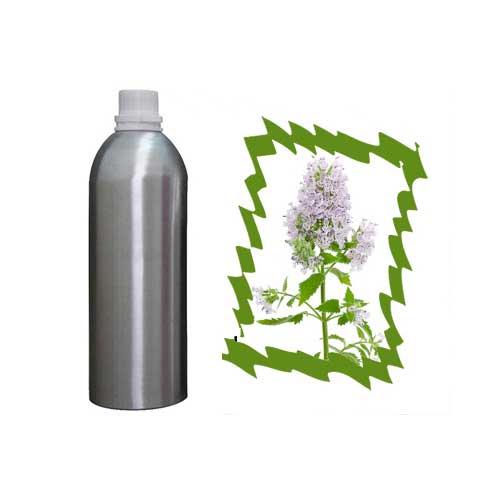Catnip Essential Oil
Catnip essential oil is an especially pungent, herbal oil. The essential oil has been found to be 10 times more effective than DEET at repelling mosquitos, and can be used at very low concentrations in your formulas for this purpose. It should work remarkably well at repelling all sorts of biting insects, not only mosquitos!
Catnip effectively repels insects, according to a study published by the American Chemical Society in August 2001.The chemical nepetalactone that gives catnip its strong scent repels mosquitoes 10 times more effectively than DEET, the compound used in most commercial bug repellents. While the study researched catnip as an essential oil, catnip tea retains some of the strong aroma of the leaves, so may keep bugs away. Alternatively,bulk catnip essential oil exporter use catnip essential oil as a bug repellent. Do not ingest essential oil or apply it directly to your skin.
Make catnip tea by mixing 1 to 2 tsp., or 1 to 2 g of dried catnip leaves with one cup of hot water. Use half the dry dosage per cup when taking liquid catnip extract. Drink catnip tea two to three times a day to soothe nerves and settle your digestive system, writes Ehrlich. Consult a doctor for appropriate dosages for infants and young children. Catnip tea is contraindicated for persons with liver and kidney disorders and pregnant women because it may induce premature labor.
Herbalists use both the leaves and roots of catnip, which may have opposite effects according to an article published in 1990 in the Canadian Veterinarian Journal. People drink catnip leaves in tea to soothe nervous disorders, whereas people use the root as a stimulant. Chemicals in catnip include acetic acid, biotin, buteric acid, choline, citral and dipentene, according to James Balch, M.D. in Prescription for Nutritional Healing. Catnip also contains folic acid, inositol, lifronella, limonene, manganese, nepetalic acid, pantothenic acid, para-aminobenzoic acid, phosphorous, sodium, sulfur, valeric acid, A and B vitamins.
The active compound within the oil is Nepetalactone. The Canadian essential oil contains a slightly higher percentage of neptalactone naturally, with a somewhat more gentle aroma. As we generally recommend blending with other insect-repelling oils, bulk catnip essential oil supplier you'll more than likely not notice a difference. We prefer, for example, a blend of 6% Geranium (any type), and 2% each of catnip and citronella.
While the price of the oil is considerably higher than other 'classic' insect repellent oils (such as Citronella, Geranium, Cedarwood and Lemongrass), catnip should be used at a much lower concentration, around 1-3%. It can be effectively blended with these other oils in a base to produce an effective natural insect repellent, without any of the worries of the potential harm from commercial chemicals (DEET has been implicated to potentially cause nerve damage, or disrupt proper growth of the nervous system in children)

